L/O/G/OTypology of societies Discipline : sociology Chair of

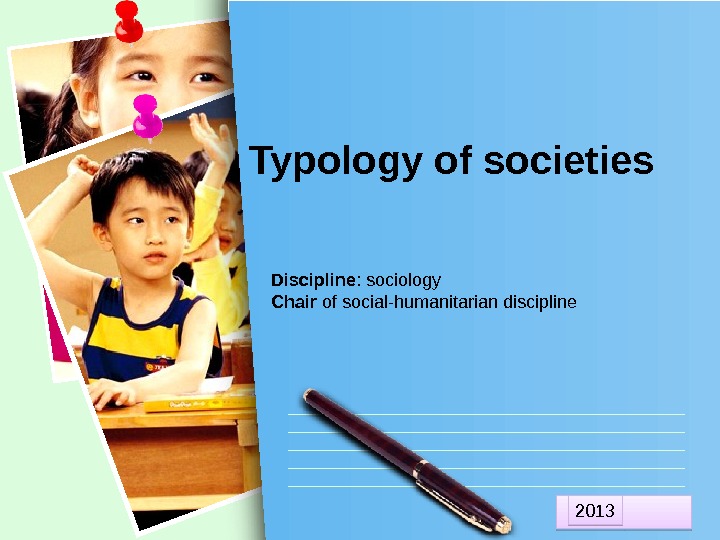
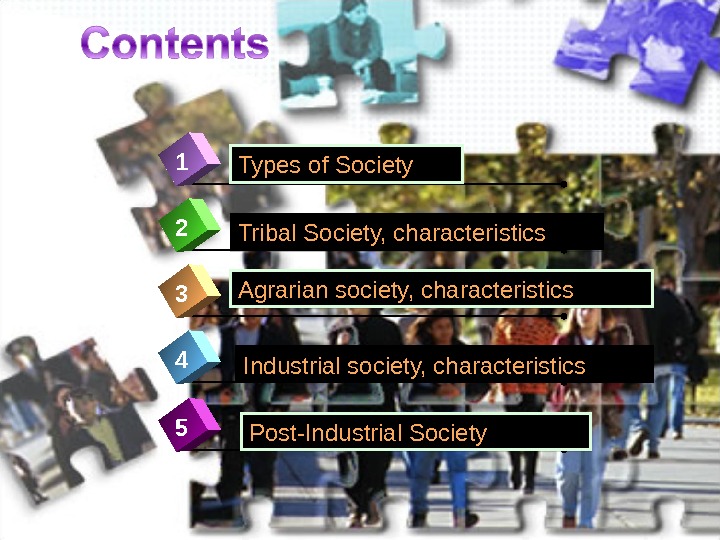
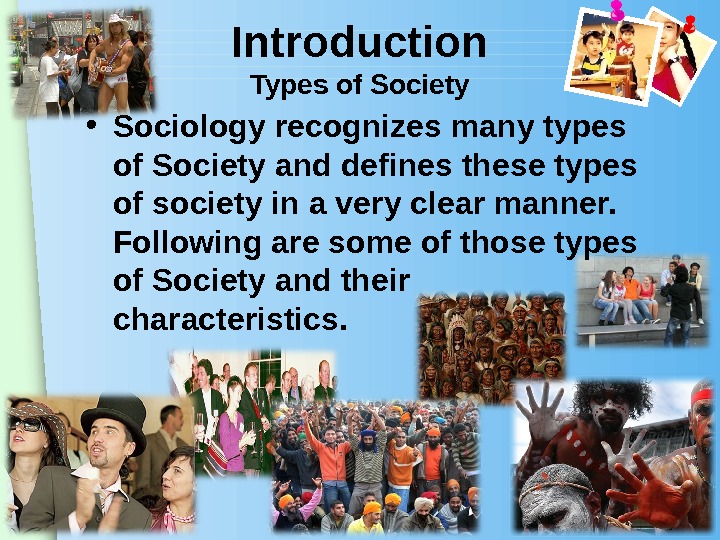
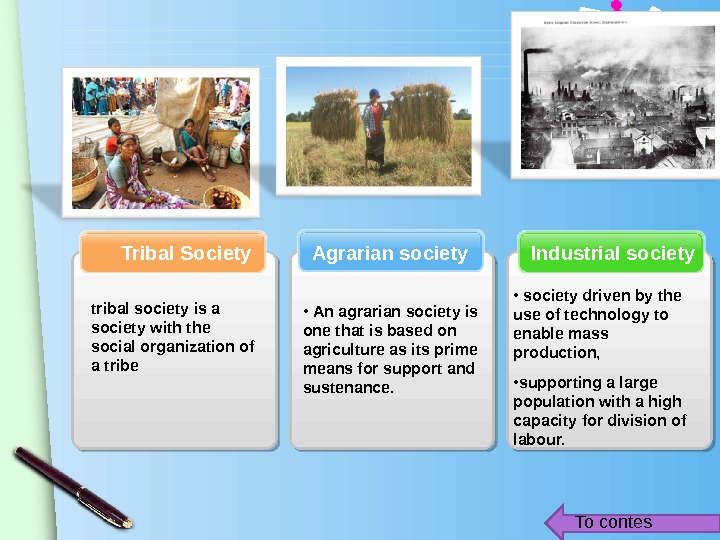
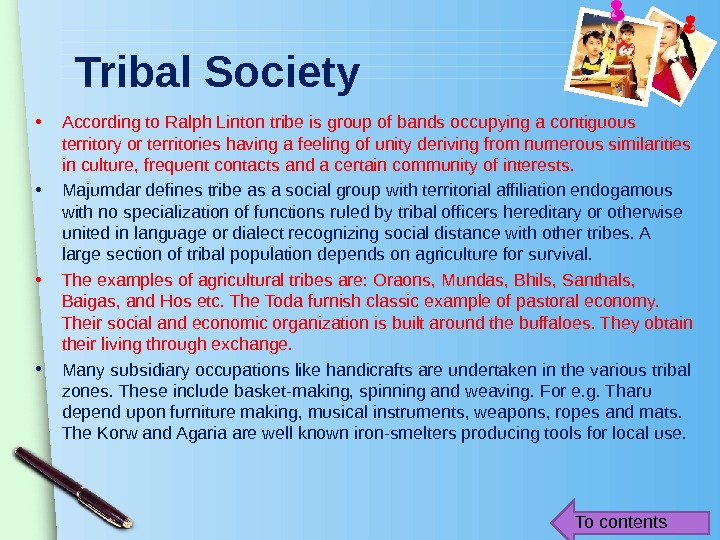
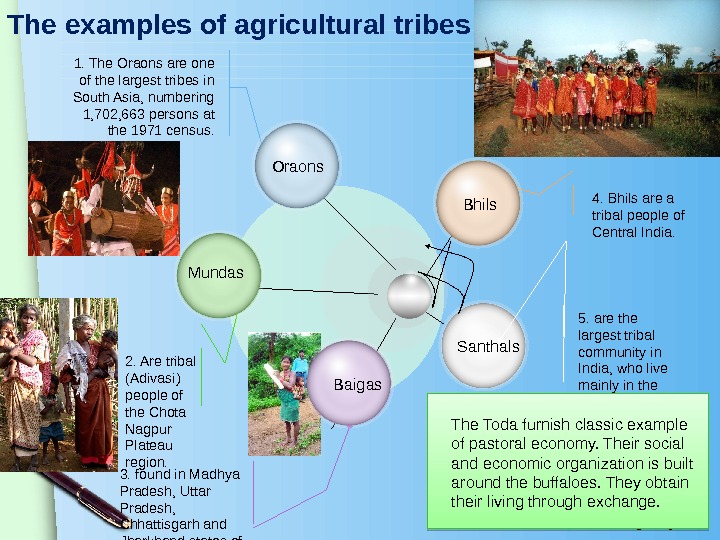
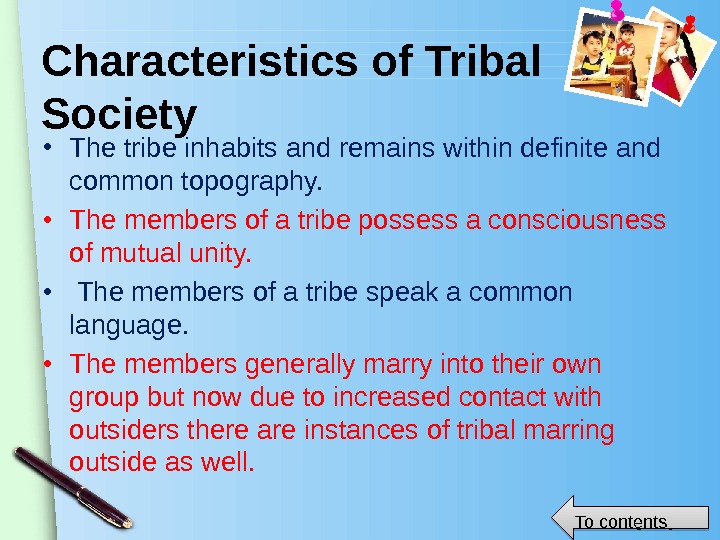
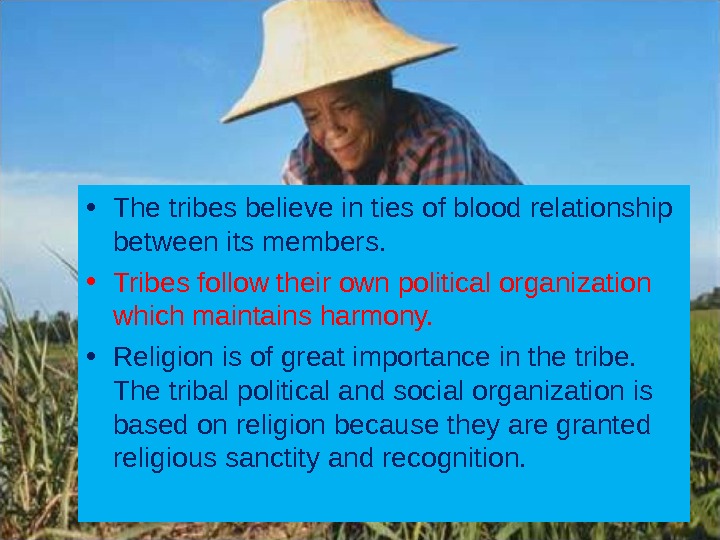
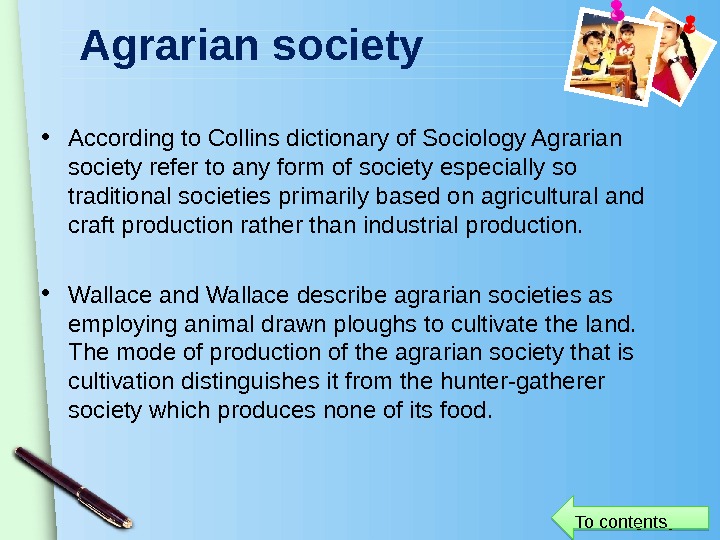


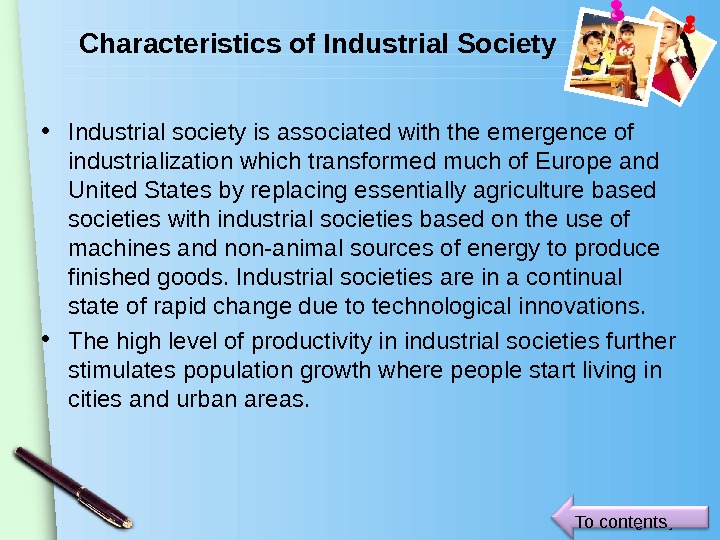


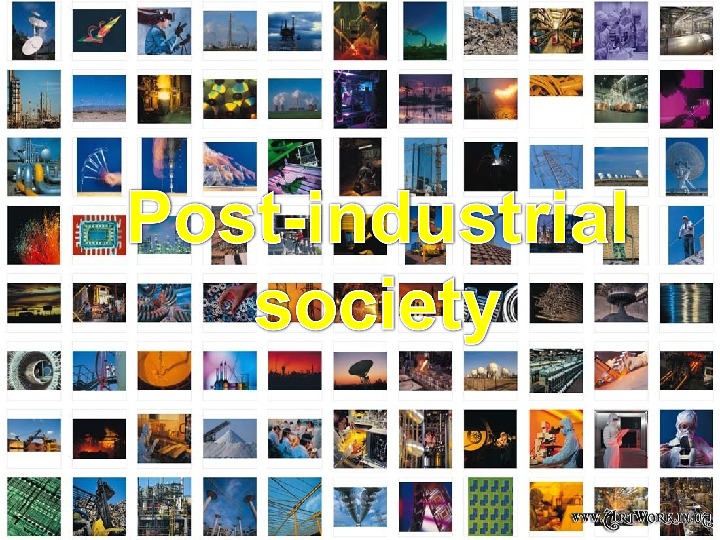
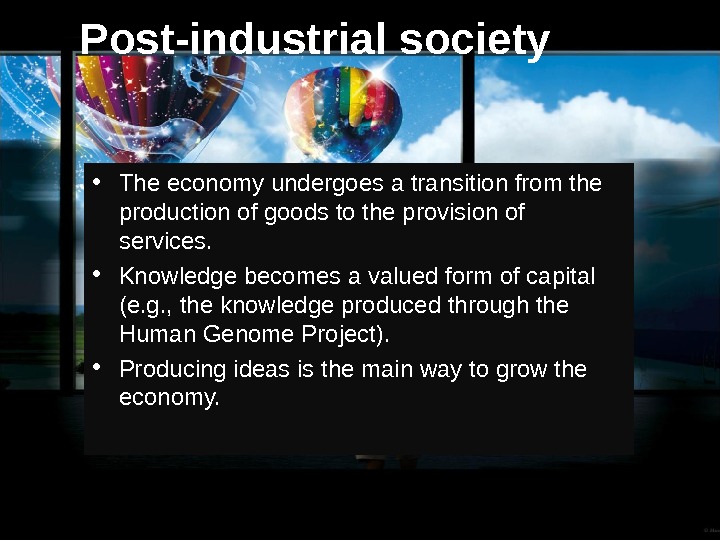

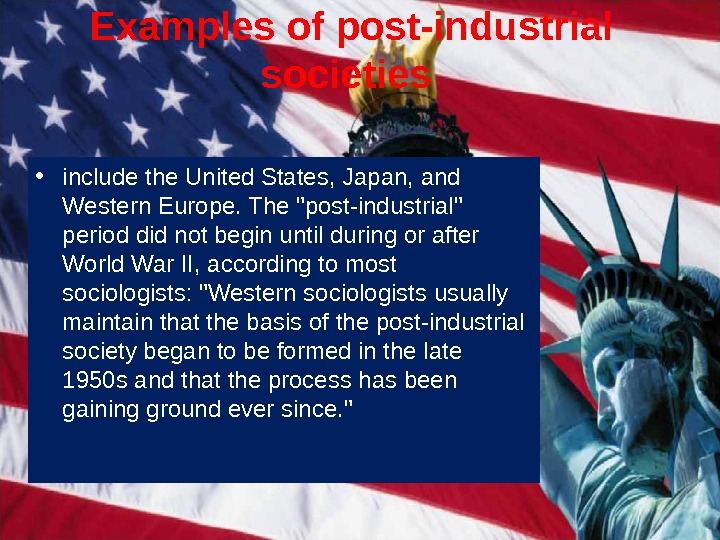
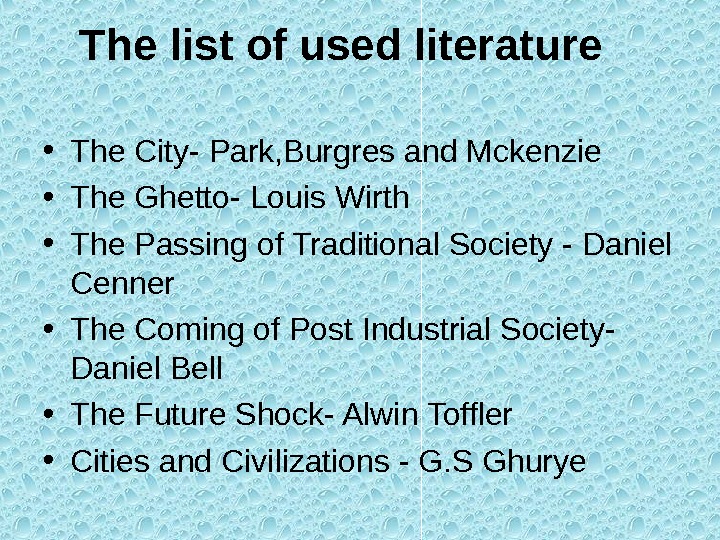

- Размер: 10.2 Mегабайта
- Количество слайдов: 20
Описание презентации L/O/G/OTypology of societies Discipline : sociology Chair of по слайдам
 L/O/G/OTypology of societies Discipline : sociology Chair of social-humanitarian discipline
L/O/G/OTypology of societies Discipline : sociology Chair of social-humanitarian discipline
 4 Types of Society 1 2 3 5 Tribal Society, characteristics Agrarian society, characteristics Industrial society, characteristics Post-Industrial Society
4 Types of Society 1 2 3 5 Tribal Society, characteristics Agrarian society, characteristics Industrial society, characteristics Post-Industrial Society
 www. themegallery. com. Introduction Types of Society • Sociology recognizes many types of Society and defines these types of society in a very clear manner. Following are some of those types of Society and their characteristics.
www. themegallery. com. Introduction Types of Society • Sociology recognizes many types of Society and defines these types of society in a very clear manner. Following are some of those types of Society and their characteristics.
 www. themegallery. com. Industrial society. Agrarian society. Tribal Society tribal society is a society with the social organization of a tribe • An agrarian society is one that is based on agriculture as its prime means for support and sustenance. • society driven by the use of technology to enable mass production, • supporting a large population with a high capacity for division of labour. To contes
www. themegallery. com. Industrial society. Agrarian society. Tribal Society tribal society is a society with the social organization of a tribe • An agrarian society is one that is based on agriculture as its prime means for support and sustenance. • society driven by the use of technology to enable mass production, • supporting a large population with a high capacity for division of labour. To contes
 www. themegallery. com. Tribal Society • According to Ralph Linton tribe is group of bands occupying a contiguous territory or territories having a feeling of unity deriving from numerous similarities in culture, frequent contacts and a certain community of interests. • Majumdar defines tribe as a social group with territorial affiliation endogamous with no specialization of functions ruled by tribal officers hereditary or otherwise united in language or dialect recognizing social distance with other tribes. A large section of tribal population depends on agriculture for survival. • The examples of agricultural tribes are: Oraons, Mundas, Bhils, Santhals, Baigas, and Hos etc. The Toda furnish classic example of pastoral economy. Their social and economic organization is built around the buffaloes. They obtain their living through exchange. • Many subsidiary occupations like handicrafts are undertaken in the various tribal zones. These include basket-making, spinning and weaving. For e. g. Tharu depend upon furniture making, musical instruments, weapons, ropes and mats. The Korw and Agaria are well known iron-smelters producing tools for local use. To contents
www. themegallery. com. Tribal Society • According to Ralph Linton tribe is group of bands occupying a contiguous territory or territories having a feeling of unity deriving from numerous similarities in culture, frequent contacts and a certain community of interests. • Majumdar defines tribe as a social group with territorial affiliation endogamous with no specialization of functions ruled by tribal officers hereditary or otherwise united in language or dialect recognizing social distance with other tribes. A large section of tribal population depends on agriculture for survival. • The examples of agricultural tribes are: Oraons, Mundas, Bhils, Santhals, Baigas, and Hos etc. The Toda furnish classic example of pastoral economy. Their social and economic organization is built around the buffaloes. They obtain their living through exchange. • Many subsidiary occupations like handicrafts are undertaken in the various tribal zones. These include basket-making, spinning and weaving. For e. g. Tharu depend upon furniture making, musical instruments, weapons, ropes and mats. The Korw and Agaria are well known iron-smelters producing tools for local use. To contents
 www. themegallery. com. The examples of agricultural tribes Santhals 4. Bhils are a tribal people of Central India. 5. are the largest tribal community in India, who live mainly in the states of Jharkhand, West Bengal, Bihar, Orissa, and Assam. 1. The Oraons are one of the largest tribes in South Asia, numbering 1, 702, 663 persons at the 1971 census. 2. Are tribal (Adivasi) people of the Chota Nagpur Plateau region. 3. found in Madhya Pradesh, Uttar Pradesh, Chhattisgarh and Jharkhand states of India. The Toda furnish classic example of pastoral economy. Their social and economic organization is built around the buffaloes. They obtain their living through exchange. Baigas Bhils. Oraons Mundas
www. themegallery. com. The examples of agricultural tribes Santhals 4. Bhils are a tribal people of Central India. 5. are the largest tribal community in India, who live mainly in the states of Jharkhand, West Bengal, Bihar, Orissa, and Assam. 1. The Oraons are one of the largest tribes in South Asia, numbering 1, 702, 663 persons at the 1971 census. 2. Are tribal (Adivasi) people of the Chota Nagpur Plateau region. 3. found in Madhya Pradesh, Uttar Pradesh, Chhattisgarh and Jharkhand states of India. The Toda furnish classic example of pastoral economy. Their social and economic organization is built around the buffaloes. They obtain their living through exchange. Baigas Bhils. Oraons Mundas
 www. themegallery. com. Characteristics of Tribal Society • The tribe inhabits and remains within definite and common topography. • The members of a tribe possess a consciousness of mutual unity. • The members of a tribe speak a common language. • The members generally marry into their own group but now due to increased contact with outsiders there are instances of tribal marring outside as well. To contents
www. themegallery. com. Characteristics of Tribal Society • The tribe inhabits and remains within definite and common topography. • The members of a tribe possess a consciousness of mutual unity. • The members of a tribe speak a common language. • The members generally marry into their own group but now due to increased contact with outsiders there are instances of tribal marring outside as well. To contents
 • The tribes believe in ties of blood relationship between its members. • Tribes follow their own political organization which maintains harmony. • Religion is of great importance in the tribe. The tribal political and social organization is based on religion because they are granted religious sanctity and recognition.
• The tribes believe in ties of blood relationship between its members. • Tribes follow their own political organization which maintains harmony. • Religion is of great importance in the tribe. The tribal political and social organization is based on religion because they are granted religious sanctity and recognition.
 www. themegallery. com. Agrarian society • According to Collins dictionary of Sociology Agrarian society refer to any form of society especially so traditional societies primarily based on agricultural and craft production rather than industrial production. • Wallace and Wallace describe agrarian societies as employing animal drawn ploughs to cultivate the land. The mode of production of the agrarian society that is cultivation distinguishes it from the hunter-gatherer society which produces none of its food. To contents
www. themegallery. com. Agrarian society • According to Collins dictionary of Sociology Agrarian society refer to any form of society especially so traditional societies primarily based on agricultural and craft production rather than industrial production. • Wallace and Wallace describe agrarian societies as employing animal drawn ploughs to cultivate the land. The mode of production of the agrarian society that is cultivation distinguishes it from the hunter-gatherer society which produces none of its food. To contents
 www. themegallery. com. Characteristics of Agricultural societies relatively weak social differentiation predominance of rural population slight development of industries some development of extractive industries the main type of production — agriculture Description of the contents To contents
www. themegallery. com. Characteristics of Agricultural societies relatively weak social differentiation predominance of rural population slight development of industries some development of extractive industries the main type of production — agriculture Description of the contents To contents
 www. themegallery. com. Industrial society • The Industrial mode of production began some 250 years ago in Britain and from there it spread to the entire world. In the simplest sense an industrial society is a social system whose mode of production focuses primarily on finished goods manufactured with the aid of machinery. • According to Wallace and Wallace in industrial societies the largest portion of the labour force is involved in mechanized production of goods and services. The term ‘industrial societies’ originated from Saint Simon who chose it to reflect the emerging central role of manufacturing industry in the 18 th century Europe in contrast with previous pre-industrial and agrarian society. To contents
www. themegallery. com. Industrial society • The Industrial mode of production began some 250 years ago in Britain and from there it spread to the entire world. In the simplest sense an industrial society is a social system whose mode of production focuses primarily on finished goods manufactured with the aid of machinery. • According to Wallace and Wallace in industrial societies the largest portion of the labour force is involved in mechanized production of goods and services. The term ‘industrial societies’ originated from Saint Simon who chose it to reflect the emerging central role of manufacturing industry in the 18 th century Europe in contrast with previous pre-industrial and agrarian society. To contents
 www. themegallery. com. Characteristics of Industrial Society • Industrial society is associated with the emergence of industrialization which transformed much of Europe and United States by replacing essentially agriculture based societies with industrial societies based on the use of machines and non-animal sources of energy to produce finished goods. Industrial societies are in a continual state of rapid change due to technological innovations. • The high level of productivity in industrial societies further stimulates population growth where people start living in cities and urban areas. To contents
www. themegallery. com. Characteristics of Industrial Society • Industrial society is associated with the emergence of industrialization which transformed much of Europe and United States by replacing essentially agriculture based societies with industrial societies based on the use of machines and non-animal sources of energy to produce finished goods. Industrial societies are in a continual state of rapid change due to technological innovations. • The high level of productivity in industrial societies further stimulates population growth where people start living in cities and urban areas. To contents
 • New medical technologies and improved living standards serve to extend life expectancy. • The family and kinship as social institutions are relegated to the background. It is becomes a unit of consumption. There is breakup of joint family system and nuclear family units become prominent. The influence of religion diminishes as people hold many different and competing values and beliefs. State assumes central power in the industrial societies.
• New medical technologies and improved living standards serve to extend life expectancy. • The family and kinship as social institutions are relegated to the background. It is becomes a unit of consumption. There is breakup of joint family system and nuclear family units become prominent. The influence of religion diminishes as people hold many different and competing values and beliefs. State assumes central power in the industrial societies.
 www. themegallery. com • Industrialism is associated with the widening gap between two social classes of ‘haves’ and ‘have nots’. • The rich or the capitalist class is seen as exploiting class and the poor class known as working class is seen as exploited. However in most of the industrial societies there is steady reduction in social inequalities. • Industrial societies have given rise to number of secondary groups such as corporations, political parties, business houses and government bureaucracies, cultural and literary associations. • The primary groups tend to lose their importance and secondary groups come to the prominence. To contents
www. themegallery. com • Industrialism is associated with the widening gap between two social classes of ‘haves’ and ‘have nots’. • The rich or the capitalist class is seen as exploiting class and the poor class known as working class is seen as exploited. However in most of the industrial societies there is steady reduction in social inequalities. • Industrial societies have given rise to number of secondary groups such as corporations, political parties, business houses and government bureaucracies, cultural and literary associations. • The primary groups tend to lose their importance and secondary groups come to the prominence. To contents

 Post-industrial society • The economy undergoes a transition from the production of goods to the provision of services. • Knowledge becomes a valued form of capital (e. g. , the knowledge produced through the Human Genome Project). • Producing ideas is the main way to grow the economy.
Post-industrial society • The economy undergoes a transition from the production of goods to the provision of services. • Knowledge becomes a valued form of capital (e. g. , the knowledge produced through the Human Genome Project). • Producing ideas is the main way to grow the economy.
 • Through processes of globalization and automation, the value and importance to the economy of blue-collar, unionized work, including manual labor (e. g. , assembly-line work) decline, and those of professional workers (e. g. scientists, creative-industry professionals, and IT professionals) grow in value and prevalence. • Behavioral and information sciences and technologies are developed and implemented. (e. g. behavioral economics, information architecture, cybernetics, Game theory and Information theory. )
• Through processes of globalization and automation, the value and importance to the economy of blue-collar, unionized work, including manual labor (e. g. , assembly-line work) decline, and those of professional workers (e. g. scientists, creative-industry professionals, and IT professionals) grow in value and prevalence. • Behavioral and information sciences and technologies are developed and implemented. (e. g. behavioral economics, information architecture, cybernetics, Game theory and Information theory. )
 Examples of post-industrial societies • include the United States, Japan, and Western Europe. The «post-industrial» period did not begin until during or after World War II, according to most sociologists: «Western sociologists usually maintain that the basis of the post-industrial society began to be formed in the late 1950 s and that the process has been gaining ground ever since. «
Examples of post-industrial societies • include the United States, Japan, and Western Europe. The «post-industrial» period did not begin until during or after World War II, according to most sociologists: «Western sociologists usually maintain that the basis of the post-industrial society began to be formed in the late 1950 s and that the process has been gaining ground ever since. «
 The list of used literature • The City- Park, Burgres and Mckenzie • The Ghetto- Louis Wirth • The Passing of Traditional Society — Daniel Cenner • The Coming of Post Industrial Society- Daniel Bell • The Future Shock- Alwin Toffler • Cities and Civilizations — G. S Ghurye
The list of used literature • The City- Park, Burgres and Mckenzie • The Ghetto- Louis Wirth • The Passing of Traditional Society — Daniel Cenner • The Coming of Post Industrial Society- Daniel Bell • The Future Shock- Alwin Toffler • Cities and Civilizations — G. S Ghurye
 L/O/G/OThank you!
L/O/G/OThank you!

